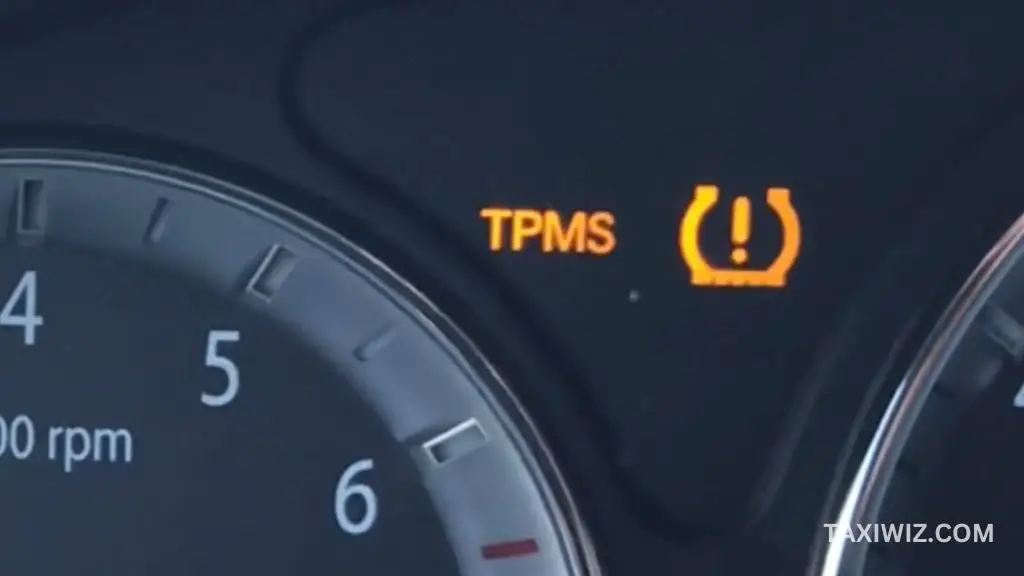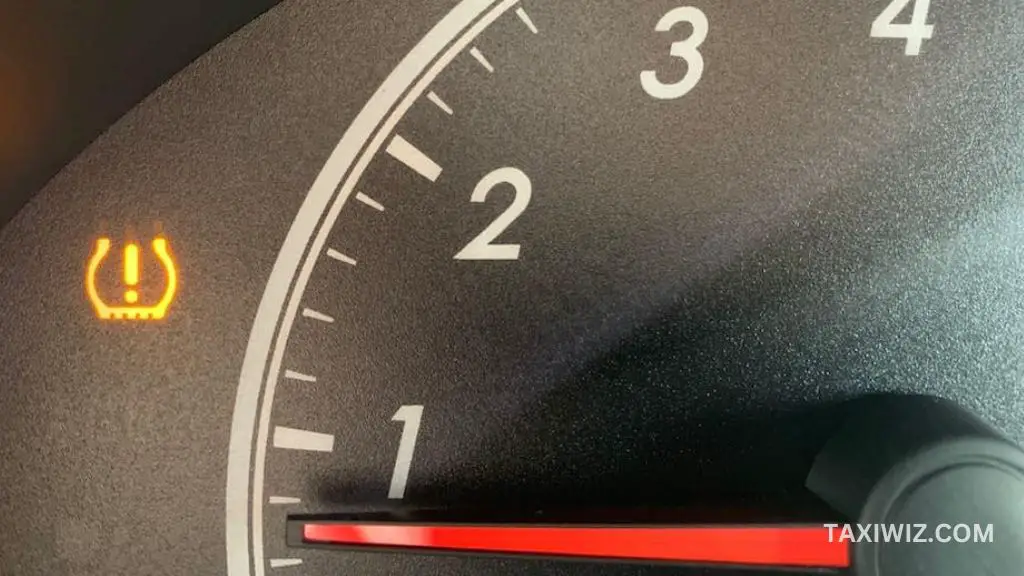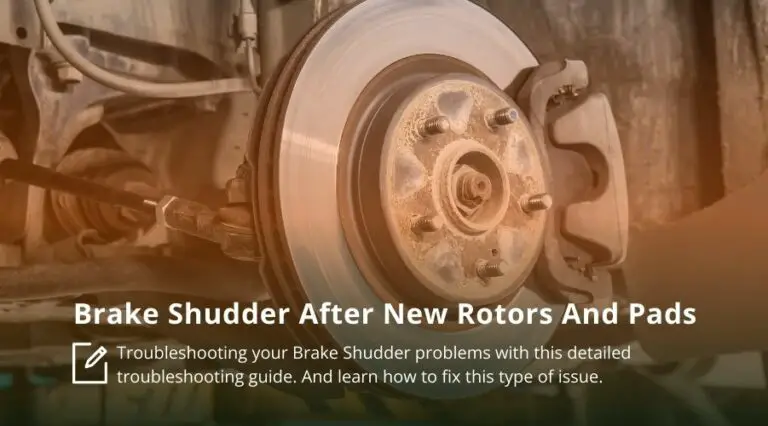What Does Tire Sensor Fault Mean? – Meaning, Problems & Fixes
When the “tire pressure sensor fault” message pops up in the message center of your car, it means –
- there is an issue with the tire pressure monitoring system (TPMS),
- one of the tires is overinflated or underinflated, or
- a potential leak is present in the tires.
A fault in the sensor itself can cause serious issues in your car if not fixed on time. Let’s take a deeper look into the causes of this message popping up, and what you can do to resolve the issue.
What Does Tire Sensor Fault Mean and how its Function?

A TPMS is a safety appliance installed in all American cars from 2007 onwards. So if your car model dates before 2007, you won’t find this feature in your car’s message system. Adapting this feature became mandatory in 2014 by the European Union.
This system has pressure sensors installed inside each wheel. In doing so, the message board will show the status of the air pressure inside the tires in real-time. So when the amount of pressure is not substantial, the driver will be informed immediately and can take the necessary action to fix it.
Dangers of Over and Under-inflated Tires
An imbalanced pressure on your car’s tires might not sound too serious, but it can cause more damage than you can expect. Here are some major complications that can occur:
For underinflated tires:
- Early wear and tear on the tread
- Increased difficulty in steering and maneuvering
- Excess friction leads to too much heat generation
- The possible explosion of the tire
For overinflated tires:
- Poor traction
- Too little friction, leading to easy slippage
- Damaged suspension
- Difficulty with steering and maneuvering
- Harsh rides with decreased control
- Possible tire explosion
Causes of Faulty Tire Pressure Sensor
While there can be issues with tires, the TPMS itself can become faulty. To know how to fix it, it is important to first know the underlying cause of its damage. Here are some of the most causes of a faulty tire pressure sensor:
Sometimes when there is often or too harsh an impact on the tire and curb, the sensor in the wheel can get damaged.
Tire pressure sensors can also break if the tire has not been mounted or dismounted correctly. As a result, the constant wear on the sensor itself can cause it to break.
One thing most people easily forget is that the TPMS sensor runs on a battery. So over time, the charge will drain and will display the tire sensor fault message on the message board.
It’s good to inspect the sensor batteries and replace them when the charge is out.
If you have an older model of a car, the message might just display “Tire Pressure Sensor Fault” instead of specifying that there is a loss of pressure within the tire.
More recent vehicles have been designed to clearly show “Low Tire Pressure” in the message board for that specific issue. So for older vehicle models, you might want to check on the tire pressure before worrying about the overall TPMS damage.
Can I Just Ignore the TPMS Warning?

Even if the cause is possibly small, you should never disregard the tire pressure sensor warning message. Minor issues can eventually lead to major ones that will result in severe accidents if constantly overlooked.
Not enough air or too much air in the tires can significantly affect driving. Along with that, the fuel efficiency will decrease, so it is an overall loss for your car.
Hence, you should always take tire sensory fault messages seriously, and get the problem fixed as soon as possible.
How to Fix Tire Pressure Sensor Fault?
One way to resolve a tire pressure sensor issue is to replace the TPMS sensor. You can have a car mechanic do this, or you can do it yourself if you have the necessary tools.
Only two things are needed if you want to replace the TPMS yourself at home:
- Air gauge
- Compressor
Both these can be found in your local hardware store. Follow these steps to properly replace your vehicle’s TPMS:
1. Ensure cool tires
Before you get started, you have to allow the tires to cool down. Keeping the car off for several hours or overnight will work best. If the tires are hot or warm, you won’t get an accurate reading on the air gauge.
2. Take out the valve stem cap
Start with a tire on any side of your car, and then unscrew the cap of the valve stem. This will allow you to access that particular tire.
3. Measure the air pressure
Now take the air gauge and press it to the valve steam. Check the air pressure reading, and then compare it with your car manufacturer’s recommended air pressure.
4. Adjust the proper pressure
Bring out the compressor, connect its hose to the valve stem, and inflate your tire accordingly. Keep an eye on the air gauge and make sure to stop inflating when the air pressure has adjusted to the appropriate level.
If you overinflated by accident, you will need to let some of the air out. This can be done by pressing the release button at the back of the gauge. Remove the air gauge and compressor when you are done making the adjustment.
5. Restart the TPMS
Turn on the ignition and take your car out for a short-distance drive. This will reset the TPMS and make it start anew.
However, you might see different instructions on your message board based on the model of your car. Just follow those prompts accordingly and the whole system will be re-initialized.
Other Issues with the TPMS to Notice
Sometimes a faulty tire sensor might not necessarily mean it needs to be replaced. Here are a few more things you should look out for:
- Restore a lost connection:
If the TPMS sensor just lost connection, you can just re-initialize it by restarting the system. Start your car, and follow the prompts on the dashboard.
- Identifying the bad sensor:
If your message board doesn’t directly show which sensor is faulty, you can just connect a code reader to the machine and find out where the issue is.
You can also try swapping the wheels for a replacement until you find where the sensor has gone bad.
- Change in temperature:
Your TPMS sensor might show a fault if there is a sudden change in temperature, as temperature directly affects air pressure.
Try taking out your car to drive in areas where the temperature is different. If the message no longer pops up, you’ll understand that it was because of the weather or temperature.
Frequently asked questions (FAQs)
1. How much does it cost to fix a tire pressure sensor fault?
It will cost you around 300-400 USD.
2. How long do tire sensors last?
They will typically last 5-10 years.
3. Can you drive without tire sensors?
Yes, but the warning light will always be there.
Conclusion
A TPMS sensor warning message might seem annoying, but it is something you should never ignore. Not fixing a tire sensor fault puts your car at risk of serious accidents.
Fixing a TPMS sensor is quite easy. For other issues with the sensor, you just have to keep an eye on the possible causes and then troubleshoot as needed.



